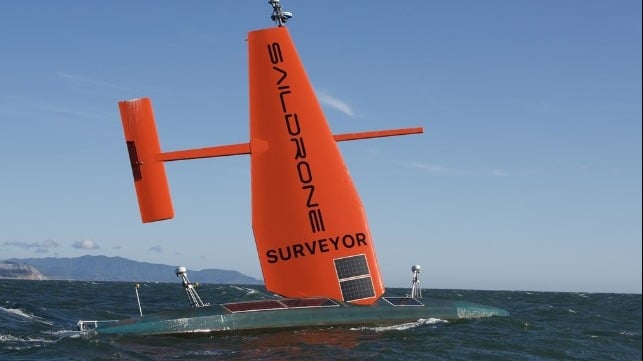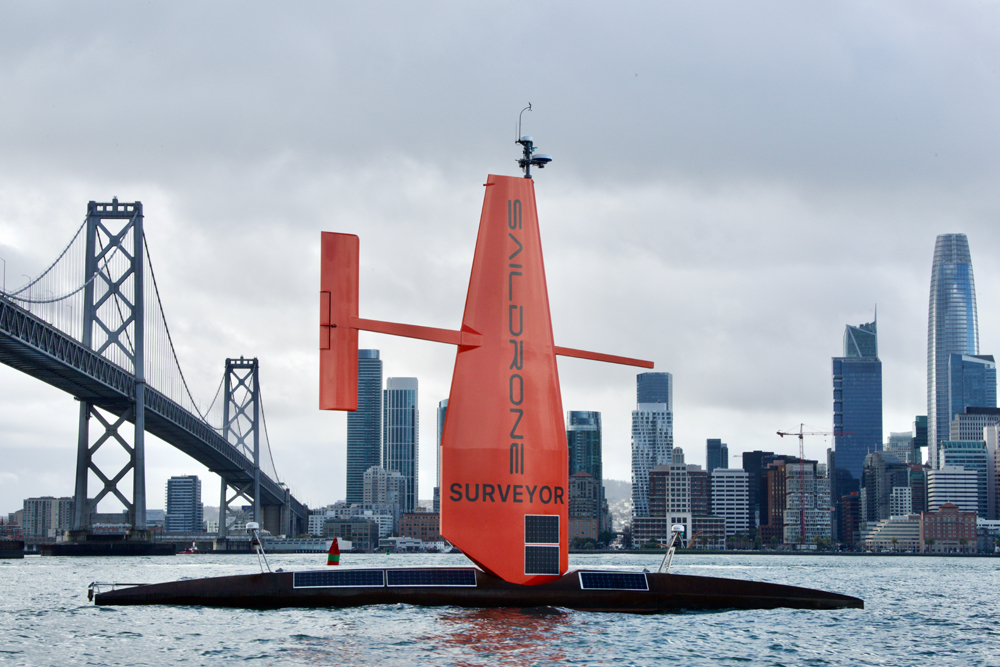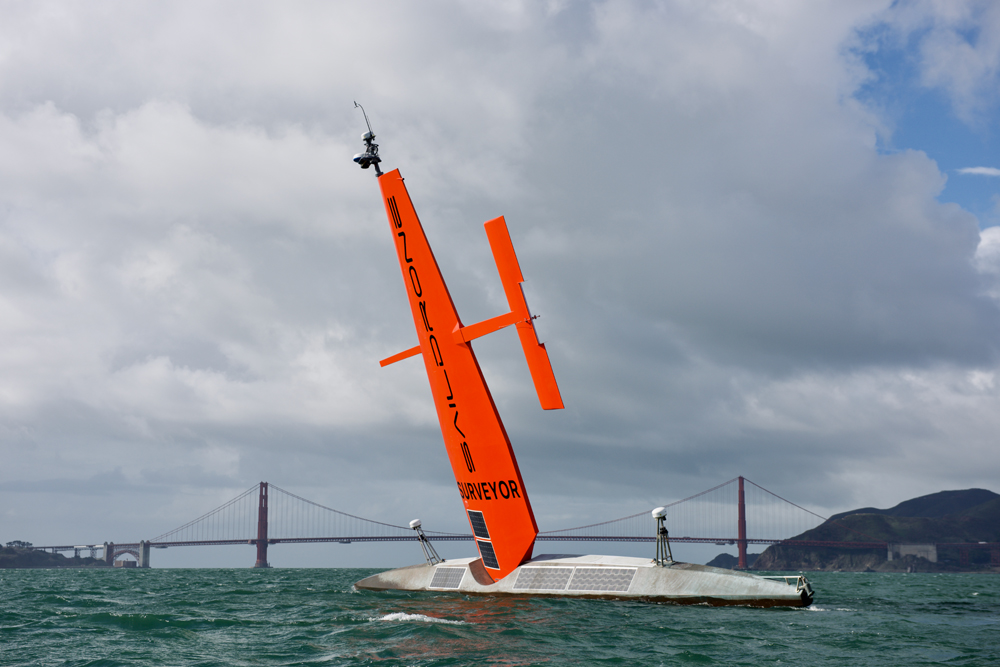Autonomous Vessel Completes Pacific Crossing to Hawaii Mapping Ocean

After a voyage lasting 28 days and covering an estimated 2,250 nautical miles, an uncrewed, autonomous vessel mostly powered by wind and solar energy is arriving at the dock in Honolulu, Hawaii this afternoon, July 8. The Saildrone Surveyor, a 14 ton vessel promoted as the world’s largest and most advanced autonomous ocean mapping drone, completes its trans-Pacific maiden voyage having sailed from San Francisco.
While it is not the first ocean crossing for one of Saildrone's autonomous surface vehicles, the Saildrone Surveyor is a new, much larger class of vehicle optimized for deep-ocean mapping. Measuring 72 feet in length, the Saildrone Surveyor carries a sophisticated array of acoustic instruments, normally carried by large, manned survey ships. The Surveyor's sensors interrogate the water column looking at underwater ecosystems and map the seafloor in high resolution to a depth of 23,000 feet.
Using renewable wind and solar energy as its primary power source, the Saildrone Surveyor is the only vehicle in the world capable of long-endurance, uncrewed ocean mapping operations. During its maiden voyage, they report that it mapped 6,400 square nautical miles of seafloor. The data it collected will help address issues impacting the world, including climate change, offshore renewable energy, natural resource management, and maritime safety.
Multibeam data from the Saildrone Surveyor has been calibrated and assessed by an external team from the University of New Hampshire, which also calibrates the government survey vessels. "The data quality from the Surveyor is of very high quality, as good as anything we have seen from a ship," said Larry Mayer, director for the UNH Center for Coastal and Ocean Mapping. "Due to the wind-powered nature of the vehicle, it is very quiet, and this enables the very accurate acoustic measurements needed to map to these depths."


In San Francisco during tests earlier this year (Saildrone)
The ocean covers more than 70 percent of the planet, but over 80 percent remains unmapped and unexplored, says Saildrone. The lack of ocean exploration is largely due to the high cost of access to the oceans, which has traditionally been undertaken by large ships. These ships can cost hundreds of millions of dollars to build and hundreds of thousands of dollars per day to operate. The Saildrone Surveyor represents a paradigm shift in the cost of ocean access, performing the same job as a survey ship, but at a fraction of the cost and carbon footprint.
"This successful maiden voyage marks a revolution in our ability to understand our planet," said Richard Jenkins, Saildrone founder and CEO. "We have solved the challenge of reliable long-range, large-payload remote maritime operations. Offshore survey can now be accomplished without a large ship and crew."
With this successful proof of concept voyage, Saildrone, based in California, plans to now build a fleet of Surveyors to be manufactured at US shipyards. Saildrone intends to map the entire earth's oceans in the next 10 years.
